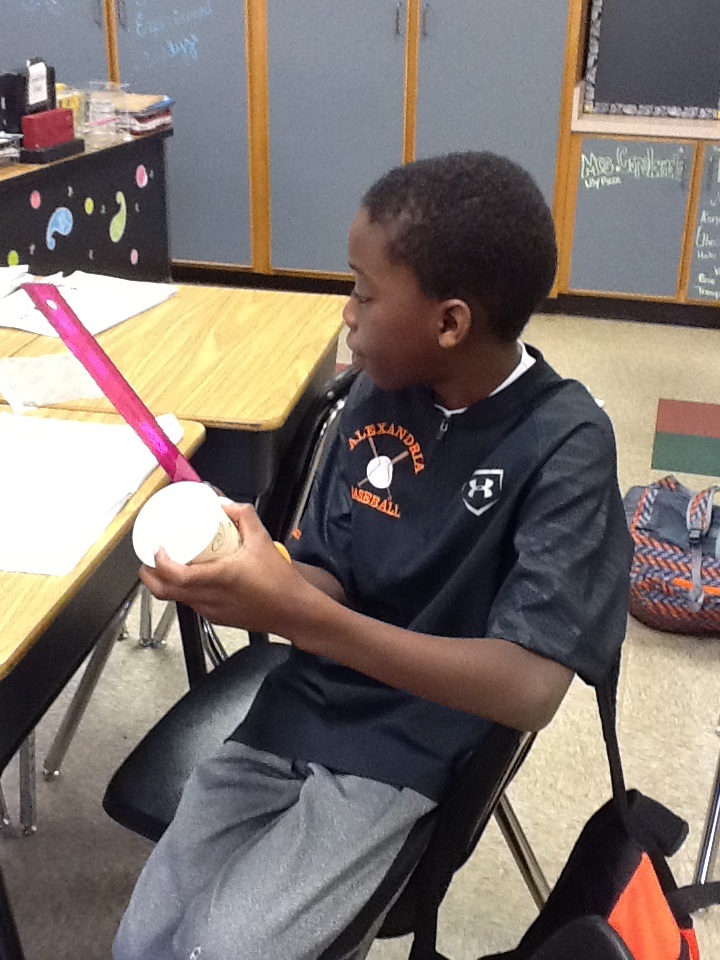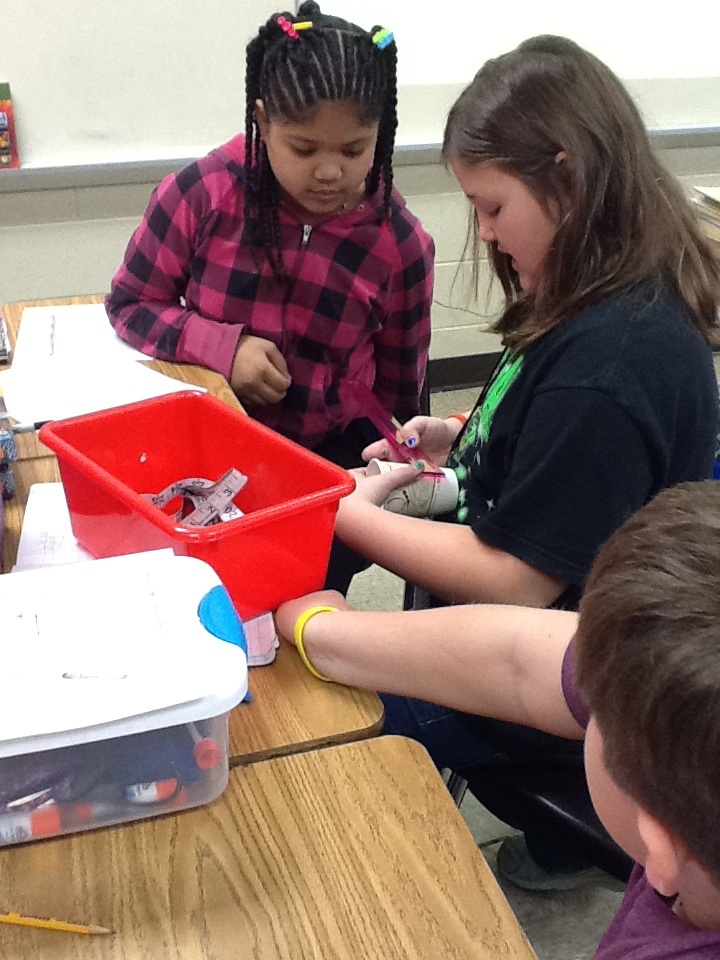The adventures of 3rd Nine Weeks
We have been exploring matter. We have learned properties of matter and different ways we can use math to measure matter. We are applying our knowledge to measure the capacity of homemade boats. We are also taking on the Boat Design Challenge to see who can build the boat that will hold the most passengers. See us in action below:
Keys to Achieve...
matter-anything that has mass and takes up space
biotic-living matter; made of cells
abiotic-non-living matter; made of atoms
atoms-the most basic building block of abiotic matter
mass-the amount of matter inside an object; measured in milligrams, grams, and kilograms using a balance or a gram scale (mass is not the same as weight)
volume-the amount of space an object takes up; polyhedrons are measured with a ruler (LxWxH); irregular shapes are measured using a method of water displacement (the bath tub method)
density-the measure of how much mass is in a given volume; can be compared by using the sink or float method; or find mass and divide by volume. Pure water has a density of 1.0 m/g.
buoyant/buoyancy-refers to an objects ability to float
capacity-the maximum amount that an object can hold
mL, L, kL-are abbreviations for milliliters, liters, and kiloliters; used to measure liquid volume.
mm, cm, m, km-are abbreviations for millimeters, centimeters, meters and kilometers; the metric system-used to measure distance
independent variable-something that can be changed by the scientist in a lab investigation.
biotic-living matter; made of cells
abiotic-non-living matter; made of atoms
atoms-the most basic building block of abiotic matter
mass-the amount of matter inside an object; measured in milligrams, grams, and kilograms using a balance or a gram scale (mass is not the same as weight)
volume-the amount of space an object takes up; polyhedrons are measured with a ruler (LxWxH); irregular shapes are measured using a method of water displacement (the bath tub method)
density-the measure of how much mass is in a given volume; can be compared by using the sink or float method; or find mass and divide by volume. Pure water has a density of 1.0 m/g.
buoyant/buoyancy-refers to an objects ability to float
capacity-the maximum amount that an object can hold
mL, L, kL-are abbreviations for milliliters, liters, and kiloliters; used to measure liquid volume.
mm, cm, m, km-are abbreviations for millimeters, centimeters, meters and kilometers; the metric system-used to measure distance
independent variable-something that can be changed by the scientist in a lab investigation.








